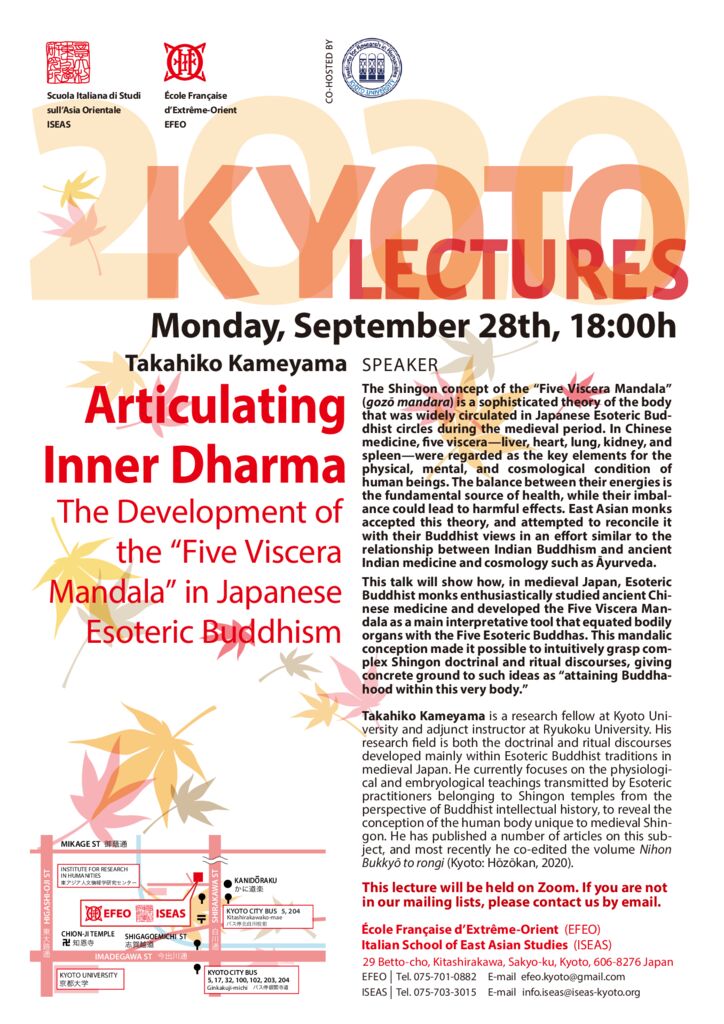The Shingon concept of the “Five Viscera Mandala” (gozô mandara) is a sophisticated theory of the body that was widely circulated in Japanese Esoteric Buddhist circles during the medieval period. In Chinese medicine, five viscera—liver, heart, lung, kidney, and spleen—were regarded as the key elements for the physical, mental, and cosmological condition of human beings. The balance between their energies is the fundamental source of health, while their imbalance could lead to harmful effects. East Asian monks accepted this theory, and attempted to reconcile it with their Buddhist views in an effort similar to the relationship between Indian Buddhism and ancient Indian medicine and cosmology such as Âyurveda.
This talk will show how, in medieval Japan, Esoteric Buddhist monks enthusiastically studied ancient Chinese medicine and developed the Five Viscera Mandala as a main interpretative tool that equated bodily organs with the Five Esoteric Buddhas. This mandalic conception made it possible to intuitively grasp complex Shingon doctrinal and ritual discourses, giving concrete ground to such ideas as “attaining Buddhahood within this very body.”
Takahiko Kameyama is a research fellow at Kyoto University and adjunct instructor at Ryukoku University. His research field is both the doctrinal and ritual discourses developed mainly within Esoteric Buddhist traditions in medieval Japan. He currently focuses on the physiological and embryological teachings transmitted by Esoteric practitioners belonging to Shingon temples from the perspective of Buddhist intellectual history, to reveal the conception of the human body unique to medieval Shingon. He has published a number of articles on this subject, and most recently he co-edited the volume Nihon Bukkyô to rongi (Kyoto: Hôzôkan, 2020).
This lecture will be available on Zoom. A limited audience (maximum ten persons, with precedence to researchers and advanced students) will be allowed at our centre. For this, please contact us by e-mail.
